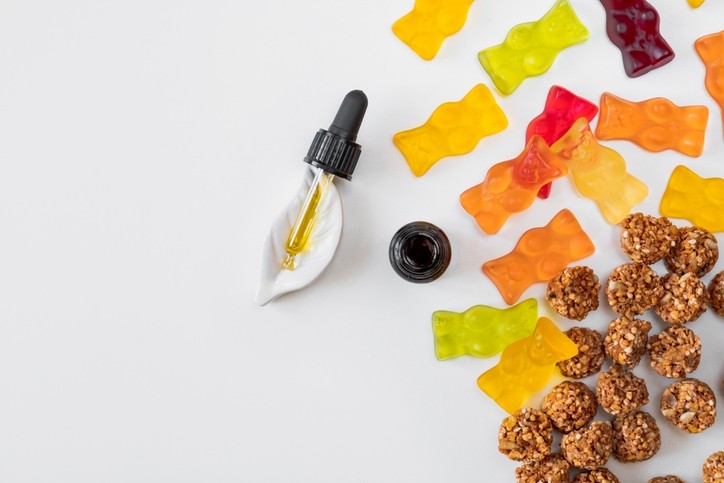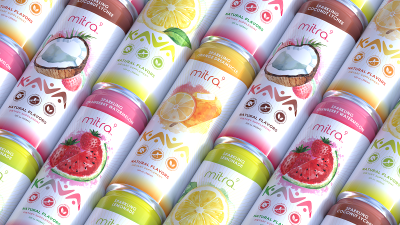FDA tackles safety challenges related to ‘misinformation’ about CBD, food additives and how it makes science-based decisions

“In almost every neighborhood you go to, you can see stores on the corners that are marketing CBD and kratom and others, and one of the things that we have been thinking about here at FDA, using CBD as an example, is what does the regulatory framework for those products look like?” Kimberlee Trzeciak, FDA deputy commissioner for policy, legislation and international affairs, recently said during a webinar hosted by the Alliance for a Stronger FDA.
She reiterated that “based on what we know about CBD in particular, we do not think that those products would be able to meet the safety standards that we have in place for foods and dietary supplements today.”
And yet, given its wide availability, she said FDA wants to ensure that “with CBD and kratom, consumers are educated about what they are taking” and adverse events are reported and minimized – especially in children.
“We want to work with Congress on this effort,” which includes “thinking through how do we ensure that [products with these ingredients] are clearly labeled so CBD is not making its way into the hands of children,” and if there are adverse events that they are quickly and accurately reported in such a way that the agency can “identify those trends,” she said.
Likewise, Trzeciak said, FDA wants to know who is making the products with kratom and CBD, where they are being mad and that they are “manufactured or produced in a way that is safe.
Finding the answers “is really going to take collaboration with the Hill and with stakeholders,” from whom FDA needs a “better sense … about where those lines need to be drawn in terms of the safety of the products” and level of oversight, she said.
Accurate information, transparent decision-making cornerstones to FDA’s success
At the root of how FDA handles CBD going forward are two pain points that are keystones to the agency’s ability to successfully manage public safety threats and food policy more broadly: access to accurate information that is easy to understand and transparency into how FDA evaluates food safety.
“We are working in a tough environment where people are very suspicious of government and concerned about overreach. It is very important for the external community to be organized. Where there is scientific truth or reliable information that is available to people, it has to be made available in a better way,” FDA Commissioner Robert Califf said earlier this year during another webinar hosted by the Alliance for a Stronger FDA.
He explained that effectively managing misinformation is an overarching priority for the agency.
“I still do not think we are winning the misinformation battle,” he said, generalizing how the agency has handled the public’s perception of COVID vaccinations to decisions the agency makes more broadly, including about food safety and policy.
Could more effective communication curb states banning food additives?
In response to a question about how FDA is addressing a “somewhat concerning trend of cases coming up before the Supreme Court around FDA authority [and] state legislatures questioning FDA scientific judgement on food additives,” Trzeciak reiterated Califf’s message about the need for more effective communication, stressing, “we make decisions on the products we regulate based on the science, based on the data and evidence that is provided to us.”
She added the agency is “doing as much as we can to be more transparent and to provide sufficient assurance that the decisions we are making are science based,” including working with the Office of External Affairs to reach more people to explain “clearly and transparently about the work we are doing.”
She added, at the agency’s behest, the Reagan-Udall Foundation recently examined and published a report on the extent and threat of misinformation surrounding the public’s perception of FDA decision, enforcement actions and policies.
“We will be reviewing that and seeing ways that we can help improve that,” Trzeciak said.
“But,” she added, “it is certainly going to take a collective effort. We at FDA are doing as much as we can to be more transparent and to provide sufficient assurance that the decisions we are making are science based. It is also important that we are reaching other stakeholders that can also help communicate that message, whether it is healthcare practitioners, speaking with patients, whether it is patient organizations, speaking with American families, making sure that we have those resources available to those that we work with closely [so] everybody feels confident in the decisions that we are making.”
Providing better nutrition information in labeling a top FDA priority
Clearer communication also is at the heart of FDA’s nutrition priorities, including defining ‘healthy’ and how it can be used in food marketing and front-of-pack labeling to supporting consumer understanding of the Nutrition Facts Panel.
Trzeciak and Califf stressed that both of these issues are top priorities for 2024.
“One of the things that the Commissioner [Califf] has been very focused on with Deputy Commissioner [Jim] Jones has been on the nutrition side and making sure that we are providing consumers with information in a way that is easy to digest for helping them to make … decisions” about their diet and health, Trzeciak said.
While FDA’s massive reorganization to create a unified Human Foods Program has yet to be finalized, as the program’s first deputy commissioner, Jones has set an ambitious agenda around improving nutrition, which includes improved labeling, as well as enhanced chemical safety, which would touch on food additives, and preventing foodborne illness.
















